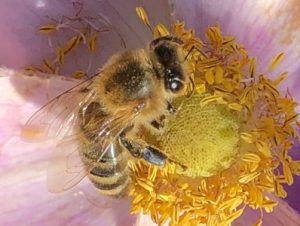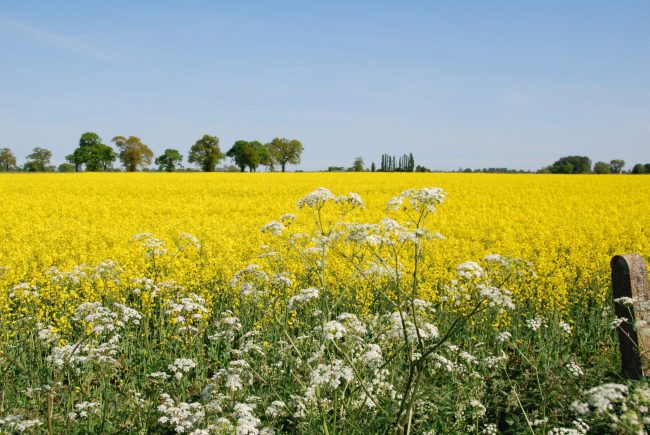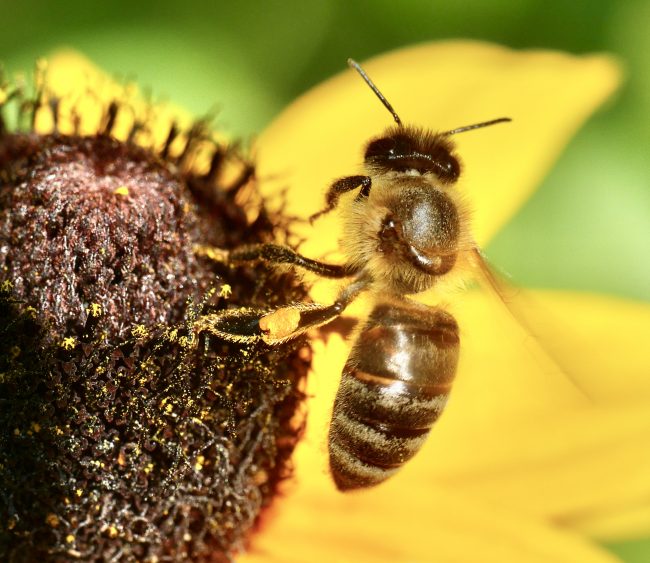The bees’ search for nectar

Using DNA technology and samples of honey from many different hives, scientists have been able to analyse the foraging behaviour of honey bees, and compare their findings with a study undertaken in the mid twentieth century. In the earlier study, honey samples were analysed by looking at the pollen grains present. The shape and sculpting on a pollen grain is unique for each species.
Back in the 1950s, honeybees gathered a lot of pollen and nectar from wild flowers, particularly plants like white clover (Trifolium repens). As with so many wild flowers, there is far less white clover to be found in hedgerows, meadows and roadsides nowadays, so honeybees have to find alternatives - though white clover is a favourite if it can be found. The alternatives include significant quantities of oilseed rape (extensively grown as a crop nowadays), Himalayan balsam - which is an introduced species that has spread far and wide, and bramble.

Sadly, present day agricultural systems tend to offer little in terms of nectar supply and much of the countryside has been described as “a green desert”. The intensification of agriculture after the WWII led to the destruction of many hedgerows (and woodland to some extent). Field sizes increased to accommodate new machinery such as large combine harvesters and ‘new’ crops such as oil seed rape were introduced.

Comments are closed for this post.
